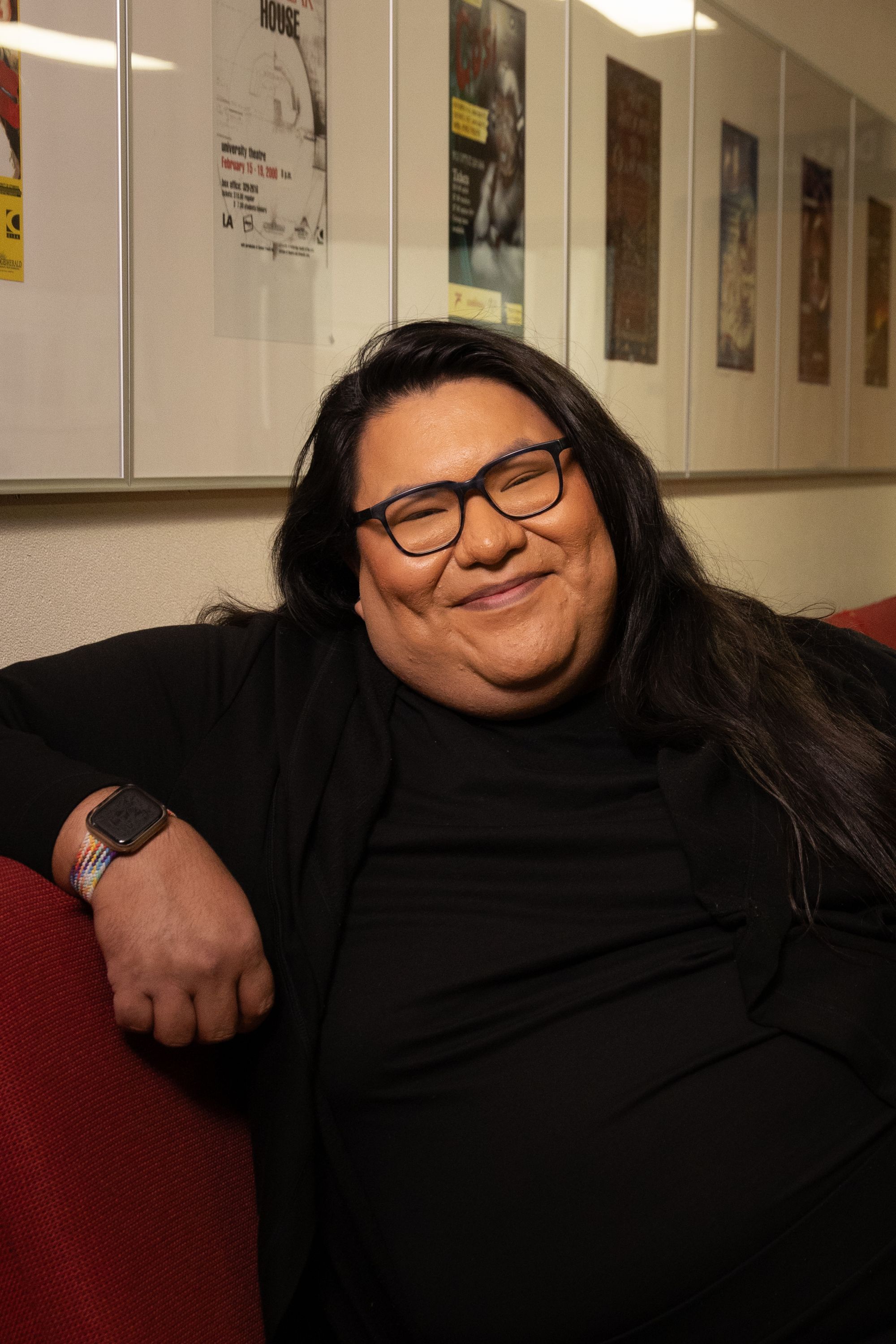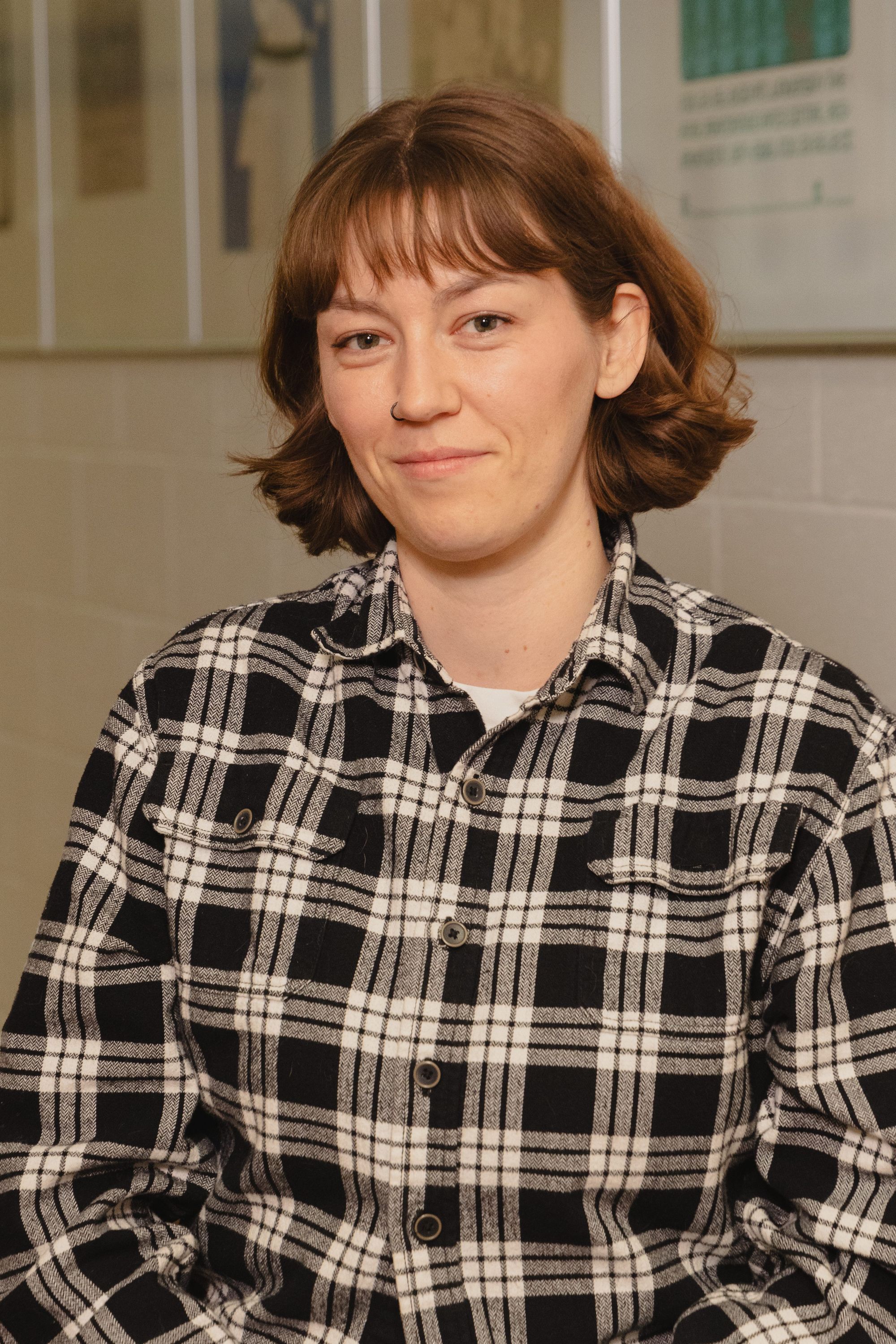Marshall Vielle (BFA - Dramatic Arts ’17) is making history on the University of Lethbridge Mainstage. Marshall, along with fellow Making Treaty 7 members Caleigh Crow and Neil Fleming, are bringing the institution’s first Indigenous-led and created production to the stage.
Titled Yisstsiiyi (listen), the production is a collaboration between Marshall, Caleigh and Neil, as well as ULethbridge students and community members, focusing on Blackfoot storytelling and the importance of listening to each other.
“Yisstsiiyi is a collectively devised theatre piece that incorporates a variety of storytelling techniques and theatre disciplines,” Caleigh says. “The show is held in the container of the beautiful story of Sky Woman and the creation of Turtle Island. It is about Lethbridge, it's about this territory and it is about life.”
A Collaborative Partnership
The process to create the script was years in the making. Marshall, working with the Making Treaty 7 Cultural Society, was invited by Dr. Shelley Scott (BA ’86) to speak in her Canadian Theatre class in 2017, kicking off a partnership with Making Treaty 7 that centred around bringing an Indigenous-led and created show to the University Mainstage, a first in the institution’s history.
“We got to talking about how amazing it would be to bring a show that Making Treaty 7 has done, as they’ve developed a process of inviting artists into a space to tell stories, and then put those stories together to create a larger show,” Marshall says.
“Shelley was inspired by that, and invited me to come back and do a Mainstage production with Making Treaty 7, which they supported as they knew that I was an alum of the drama program. It’s really cool to participate in this capacity, co-directing and co-writing is a huge honour and is something I’ve been passionate about for a while. Being given this opportunity in this way, being able to come back here and do this has been great.”
To build the script, a course was created at ULethbridge that allowed students and community members to come together in the process of theatre creation. During the class, participants visited culturally significant sites in the southern Alberta area, such as Head-Smashed-In Buffalo Jump and Writing-on-Stone provincial park, learning about the significance of the sites and hearing stories from Elders, artists and knowledge keepers. Participants were then asked to reflect on their experiences, writing blog posts and sharing what they learned.
Community Themes and Shared Stories
The idea of listening was one of the biggest themes Marshall and Caleigh found in the posts, which became the basis of the script for Yisstsiiyi.
“Taking the time to pause and listen was one of the biggest themes that we came across. There's so much knowledge amongst the Blackfoot people in Lethbridge, and if we take a moment to listen to that, what could possibly come of that? We also incorporated themes of motherhood, creation and sacrifice, which really fueled the writing process.”


Yisstsiiyi Co-directors and writers Marshall Vielle (left) and Caleigh Crow (right).
Owing to the collaborative nature of the script and production, the actors and those working on the show also shaped the story, reflecting the script’s nature as a living, dynamic piece.
“It’s really special to create work that is so local and so specific to the place that we’re in. We really wanted to tap into that,” says Caleigh. “We wanted to hear what it means for Blackfoot people to talk about what they want to see depicted on the stage.”
This comes in the form of the story of Sky Woman, a story that explains the origin of ‘Turtle Island’, which refers to the continent of North America and is a significant symbol of oral history and spiritual belief for Indigenous Peoples. It was a question asked by a student in the theatre creation class that led to the origin of Turtle Island being the focus of Yisstsiiyi.
“This process to take a question that someone thinks is silly and be able to turn it into a beautiful story that is authentic, inspiring and invites connection and wonder is all very sincere and honest. I think the highlight of this process is offering people who don’t know a lot about Indigenous viewpoints or Blackfoot culture a space to ask a question they’ve never been able to ask before and have a community representative give their own response to that question,” Caleigh adds.
“I’m really excited to be able to say this is a Blackfoot story that was created on this campus by students and faculty members working together.”
Theatre Indigenization as an Alum
For Marshall, coming back as an alum and being part of the institution’s first Indigenous-created production is an honour, as they weren’t able to experience that as a student.
“When I was a student, we touched on Indigenous theatre and storytelling, but it wasn’t a big part of the curriculum. Being able to introduce students to this kind of material, giving them a new perspective and being able to take up space on the Mainstage is a huge honour and it is really empowering to be able to direct and work with Blackfoot people in theatre spaces.”
“It feels really special knowing that we’re now at a place where multiple Blackfoot people can be part of a theatre production here at the University and feel empowered to step on stage and find their light,” Marshall adds.
As Caleigh summarizes, Yisstsiiyi is about Lethbridge, the territory it’s situated in and it’s about life. Bringing this story to life, as Marshall notes, highlights the beauty of collaborative theatre and its potential to tell and share stories to wider audiences.
“I really believe that theatre is about a group of people, gathering in a room, and coming together to fulfill a desired goal. Everybody who has been a part of this production, our common goal has been to build a foundation of understanding, we are truly proud of the story we’re going to be sharing.”